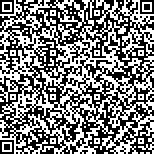| 摘要: |
| 应用面向对象方法,对遥感图像进行多尺度分割,即首先进行大尺度分割,结合NDVI提取植被 信息,将图像分为植被和非植被;然后在植被信息类内再进行小尺度分割,利用NDVI并融入几何特征进 一步提取冬小麦种植面积及空间分布。在遥感分类的基础上,将线性数据按宽度缓冲,从分类结果中扣除。 将扣除结果与地面样方实测数据对比分析。结果表明,监测结果减轻了传统分类方法的椒盐效应,监测结 果与验证样方数据比较精度为94.06%。 |
| 关键词: 遥感 面向对象 冬小麦 面积 |
| DOI:10.7621/cjarrp.1005-9121.20100610 |
| 分类号: |
| 基金项目:“中原地区基本农田保护技术研究应用”,编号:2006BAJ05A14 |
|
| ESTIMATION OF WINTER WHEAT PLANTING AREA USING OBJECT-ORIENTED METHOD BASED ON MULTI-SCALE SEGMENTATION |
|
Fan Lei1, Cheng Yongzheng2, Wang Laigang2, Liu Ting2, Hu Feng2, Feng Xiao2
|
|
1.Agricultural Economy & Information Research Center,Henan Academy of Agricultural Sciences,Zhengzhou 450002/College of Information and Management Sciences,Henan Agricultural University,Zhengzhou 450002;2.Agricultural Economy & Information Research Center,Henan Academy of Agricultural Sciences,Zhengzhou 450002
|
| Abstract: |
| Object-oriented method was used for the remote sensing image multi-scale segmentation. The first step was large-scale segmentation, in which the image was classified as vegetation and non-vegetation by NDVI. The second step was small-scale segmentation; the spatial distribution and planting area of winter wheat were ex- tracted by NDVI combined with geometric characters. Based on the remote sensing classification, this paper com- pared the calculation results with survey sampling results in the same coordinate. The results showed the remote sensing monitoring results had decreased the“salt and pepper” effect, and the accuracy between remote sensing monitoring results and verification sampling survey results amounted to 94.06%. |
| Key words: remote sensing object-oriented winter wheat area |

